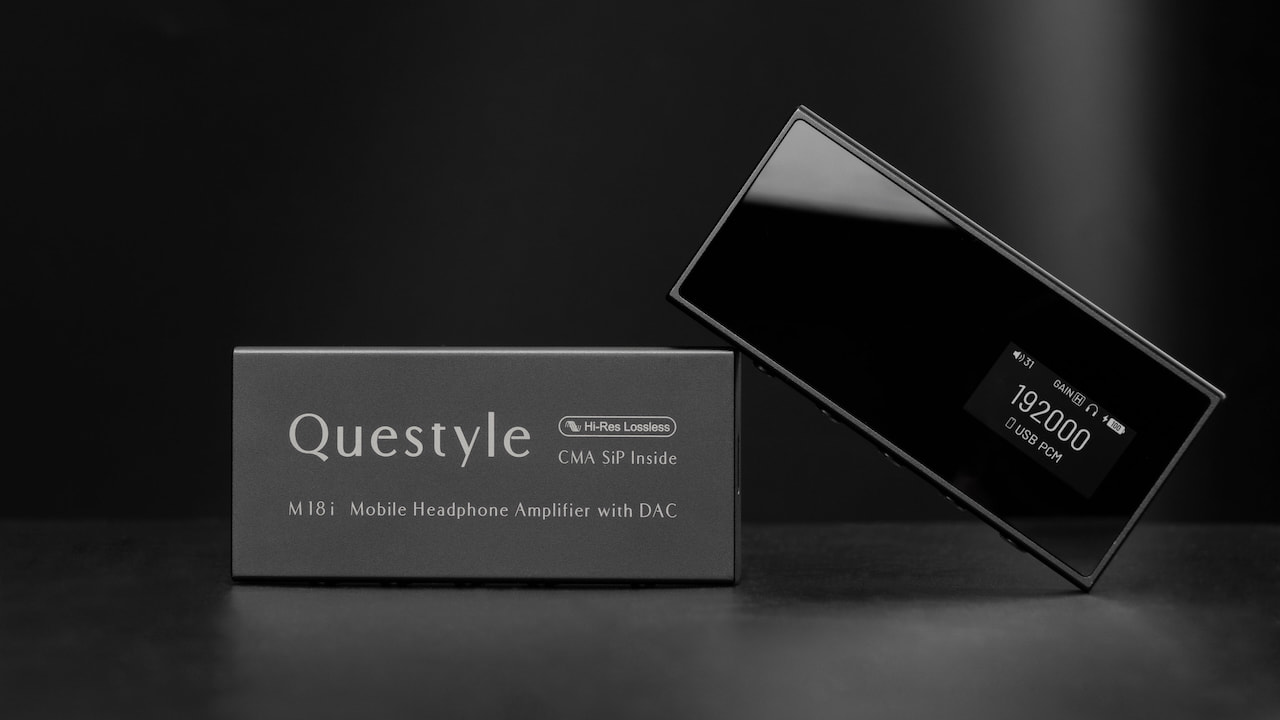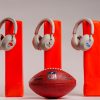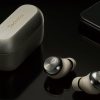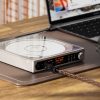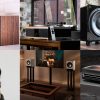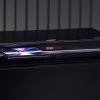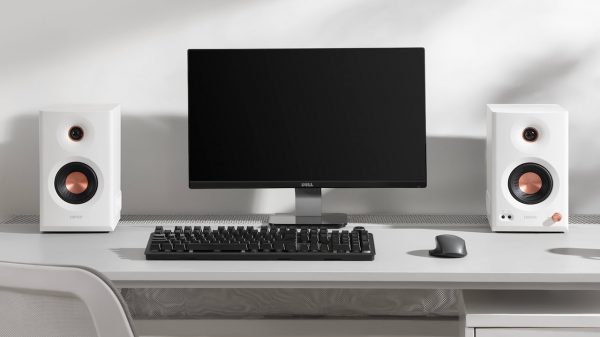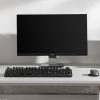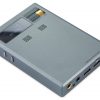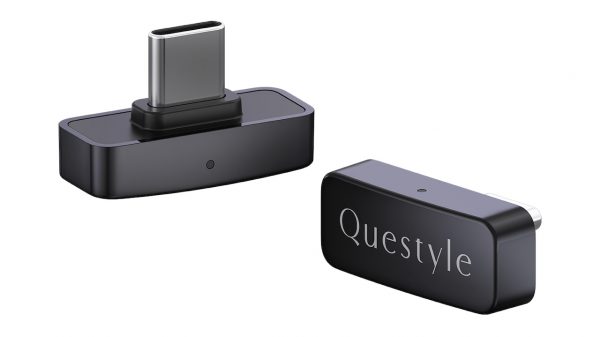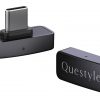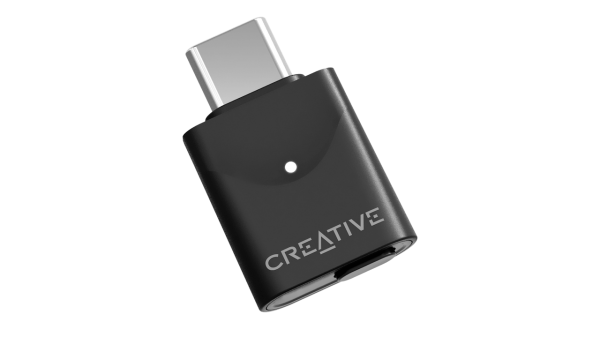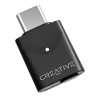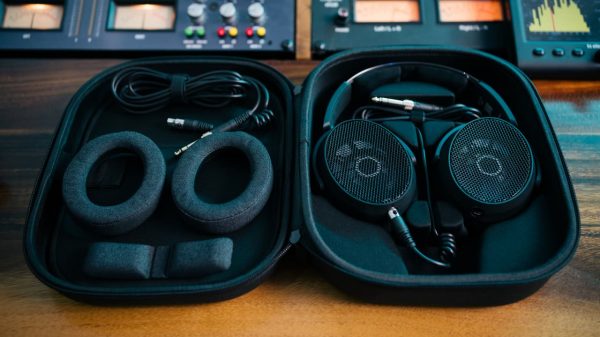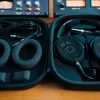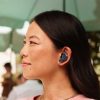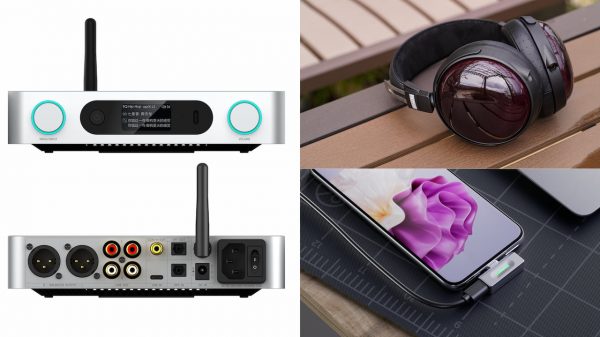If you’ve been following our “Best of” lists over the past few years, you already know Questyle isn’t in the business of making just any old dongle DACs. The Shenzhen-based brand built its reputation on current-mode amplification — a technology usually confined to DAC chips and low-power circuits, not something you’d expect to see scaled up for serious headphone or speaker rigs. Questyle decided to make it work anyway, and a decade later, that same obsessive engineering DNA runs through every product they build — from desktop amps to pocket-sized gear that thinks it’s a full-blown component. The Questyle M18i? I’m not entirely sure it knows what it wants to be when it grows up — part dongle, part desktop DAC, and entirely unwilling to pick a side.
Questyle’s first wave of products was a desktop lineup that didn’t just turn heads — it cleaned up at design competitions and held its own against gear costing a good deal more. The engineering was solid, the sound was exceptional, and the build quality left little to complain about.

The only catch? Price. These weren’t the kind of components you casually recommend to someone dipping their toes into hi-fi. Then everything shifted. Questyle decided to crash the portable audio party, and when they did, they brought the same precision, innovation, and attitude that made their desktop gear such a standout.
Questyle’s move into portable audio came with a compact headphone amplifier and DAC — their take on the “dongle” — that packed most of the same current-mode amplifier technology found in their desktop models into something roughly the size of a pack of gum. Priced in the few-hundred-dollar range, it immediately stood out for delivering serious engineering and sonic performance in a travel-friendly form.
From that moment, Questyle became our go-to name in the dongle category, and every successor has earned a spot on our annual “Best Of” lists. Their latest, the QCC Dongle Pro, continued that streak by becoming the first Questyle portable to add Bluetooth LE, aptX, and LDAC support — finally giving iPhone users a proper taste of hi-res wireless audio.
Questyle’s latest release follows a familiar pattern for the brand — breaking new ground while refusing to fit neatly into any one category. The M18i blurs the line between dongle and DAC/amp, adding Bluetooth capability to the company’s M-series lineup for the first time. It’s still compact enough to be considered a dongle by most standards, but the inclusion of an internal battery technically pushes it into DAC/amp territory. Priced at $349 USD, the M18i also lands squarely in the middle ground — not entry-level by any stretch, but far from the cost of full-sized desktop gear.
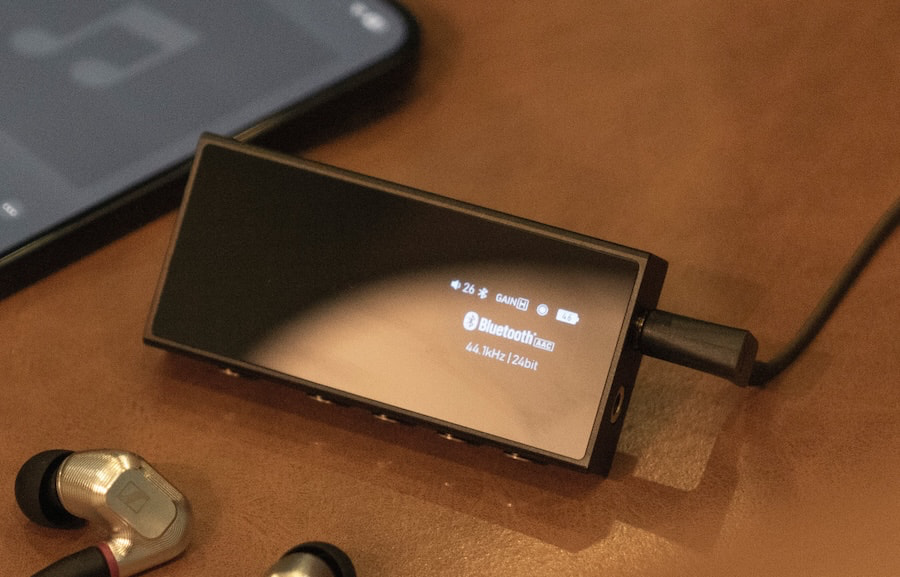
Unboxing & Build Quality: Questyle M18i Looks and Feels Anything but “Dongle”
Unboxing the Questyle M18i feels instantly familiar if you’ve handled any of the brand’s previous M-series models. The outer sleeve slides open to reveal a neatly organized presentation: the dongle itself on the top layer, with a USB-C cableand USB-A adapter tucked just below. An instruction card rounds out the package. A protective leather case is available separately — a nice touch for something this premium, though it’s not included in the standard kit.
The M18i carries forward Questyle’s signature industrial design — sleek, understated, and built with precision. It features a rectangular black aluminum chassis with a glass front panel, control buttons along one side, and a USB-C data/charging port on the other. On one end, you’ll find a USB-C data-only input, while the opposite end houses 3.5mm single-ended and 4.4mm balanced headphone outputs.
The back panel displays the Questyle logo, model number, and specs in a subtle gray finish, while the buttons sport polished silver rings around matte black faces that blend seamlessly into the design — functional, tactile, and unmistakably Questyle.
The buttons on the M18i offer a satisfying tactile click and are easy to locate by feel — a welcome improvement over some of its less refined competitors. From the USB-port end, the control layout includes a three-position mode selector, a gain button (which doubles as a multi-function control), volume down, volume up, and finally, the power button. The power control also handles display management: a quick tap adjusts screen brightness, a short press and hold powers the unit on or off, and a long 10-second hold triggers a factory reset.
It’s a smart design choice, though users will want to note that powering on or off only requires holding the button until the screen responds — no need to risk a reset unless you actually mean it.
The M18i weighs in at 140 grams (4.9 ounces) — a bit hefty compared to most dongle DACs, but that’s easily forgiven once you remember it houses its own battery. The extra weight gives it a reassuring sense of solidity and build integrity that lighter models often lack. It feels robust and premium, with tight tolerances and no flex or rattle anywhere. While the optional protective leather case is a smart investment for travel, the M18i feels more than capable of standing up to everyday use on its own.

Internals & Technology: What Powers the Questyle M18i from the Inside Out
To scale down the tech from their desktop amps, Questyle had to engineer something radically compact — a system-on-a-chip current-mode amplifier, dubbed the SiP module. But before we get there, it’s worth breaking down how the M18i’s internal architecture works. The device is divided into three distinct domains: the digital domain, the preamp domain, and the output domain.
In the digital domain, a 16-core XMOS XU316 USB controller manages both USB and Bluetooth inputs, passing the signal to a dual-mono pair of ESS ES9219Q DAC chips. Each DAC is a self-contained system-on-a-chip, featuring ESS’s Quad DAC architecture, integrated volume control, Dynamic Range Enhancement, output switching, and even a built-in headphone amp circuit.
From there, Questyle’s SiP modules take over the preamp and output stages, maintaining full current-mode operation. This separation between digital and analog domains is more than just engineering theater — it ensures that digital noise doesn’t contaminate the analog signal path, preserving the M18i’s clarity and low distortion even in such a compact, battery-powered form.
I’ve gone deep into current-mode amplification in previous Questyle reviews, so here’s the short version: most headphone amps use voltage-mode amplification, which is easier to implement when driving transducers that demand higher power. Questyle’s SiP modules, however, operate entirely in current mode — a far more complex and precise approach.
Their inclusion in the M18i is what truly sets it apart from the sea of dongles using the same ESS ES9219Q DAC chip. While others rely on off-the-shelf implementations, Questyle’s design extracts noticeably better control, dynamics, and resolution — proving that not all “dongle DACs” are created equal.
The signal flow diagram for the M18i illustrates its dual-mono configuration, featuring a fully balanced, fully differential output achieved through two SiP modules operating in opposite polarity per channel. It’s a smart and deliberate layout that maximizes channel separation and minimizes distortion.
There’s often confusion between the terms balanced and differential, so let’s clear that up. A balanced design simply means both channels have an equal path to ground — as long as each channel maintains its own ground, it qualifies. A differential design, on the other hand, refers to the signal swing itself: from +Signal to –Signal, rather than +Signal to Zero as in a single-ended amplifier.
Many assume a balanced output will automatically be louder than single-ended, but that’s not necessarily true. That misconception stems from conflating the two terms — while balanced and differential are often paired, they’re not mutually dependent. You can have balanced without differential, or differential without balanced, depending on whether the ground is shared or isolated. Questyle’s implementation is both, ensuring lower noise and higher fidelity in a package most would still call a “dongle.”
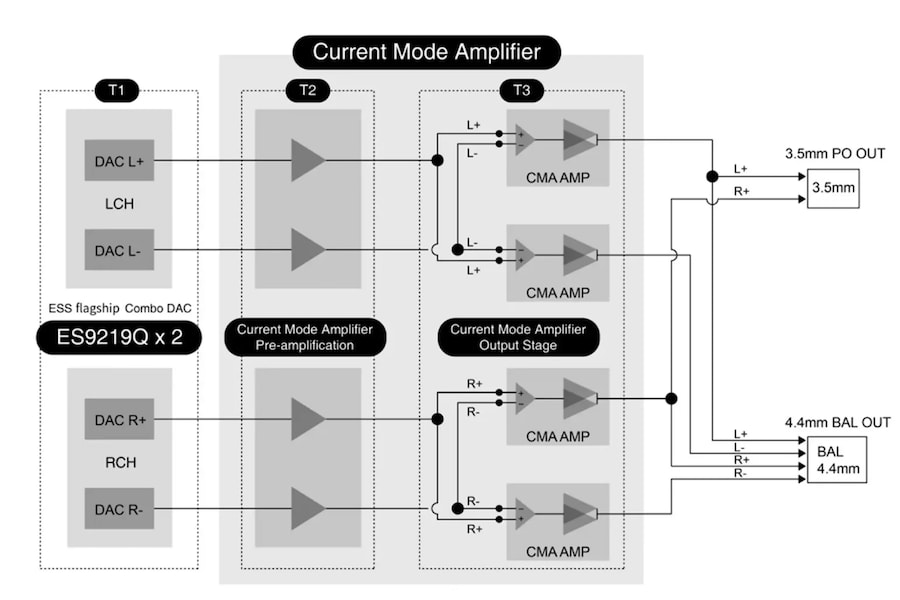
The M18i handles high-resolution formats with ease, supporting PCM up to 32-bit/384kHz and DSD up to 256. Its measured frequency response is impressively flat — 20Hz to 20kHz (±0.1dB), extending all the way to 80kHz (±2dB)for those chasing ultrasonic precision. The THD+N figure is almost absurdly low at 0.0002%, putting it in desktop DAC territory.
Output power is rated only for the balanced 4.4mm output, delivering 28mW into a 300Ω load and a healthy 260mW into 32Ω — enough muscle to drive most in-ear monitors and efficient full-size headphones. Questyle also includes selectable gain settings, giving users flexibility to match everything from sensitive IEMs to more demanding over-ears without introducing noise or distortion.
Listening Modes & Power Settings: How the Questyle M18i Adapts to Different Devices
This is where the dongle vs DAC/amp debate really kicks in. The Questyle M18i offers two distinct USB modes plus a Bluetooth mode, each serving a different use case.
In portable USB mode, the M18i runs off its internal battery, keeping your phone or tablet from draining power — a thoughtful touch for mobile listeners. In PC/Console mode, the M18i flips the script and draws power directly from the source, giving you effectively unlimited listening time. It’s also MFi certified, meaning it plays perfectly with iPads, iPhones, MacBooks, Windows 11 PCs, Android phones, and tablets — no adapters, no drama.
Then comes the wild card: Bluetooth mode. Using Qualcomm’s Snapdragon platform, the M18i supports Bluetooth LE Audio, aptX Adaptive, aptX, LDAC, AAC, and SBC. Pairing is refreshingly simple — flip the switch to BT, hold the gain button to enter pairing mode, and it shows up just like any other TWS device. You can connect it to nearly anything with a Bluetooth transmitter.
So here’s the question: if it doesn’t dangle from a cable anymore, is it still a dongle? Questyle might have just made the first one that doesn’t need to be.

Battery Life: Cupertino, We Might Have a Problem
The battery setup in the Questyle M18i is an interesting one — and not necessarily in a good way. With two of its three operating modes relying on internal power, you’d expect a generous battery capacity. Instead, Questyle opted for a 500mAh cell, which delivers roughly two to three hours of playback depending on codec and volume level. It’s a puzzling design choice that makes the source-powered (PC/Console) mode the more practical option for longer sessions.
In testing, the M18i ran fine from a Samsung S25 Ultra in PC mode, though it noticeably drained the phone’s battery faster than usual — after about two hours, my phone had dipped below 50%. The iPhone 15, however, didn’t handle things as gracefully. It not only drained quickly but also heated up enough to raise concern, prompting me to end the test after about 90 minutes. In short, while the internal battery makes the M18i more versatile on paper, it’s best treated as a short-term convenience, not a long-haul power solution.

Listening
Having cycled through more DAC/amps and dongles than I care to count, I’ve learned that testing them often comes down to what you don’t hear as much as what you do. Many dongles make trade-offs — dialing back dynamics to save power, or leaning on system-on-chip (SoC) designs that sacrifice output capability for compactness. The Questyle M18i, thankfully, doesn’t play that game. Its current-mode design ensures it never feels underpowered, and the dynamic rangeis excellent.
Compared to the M15 series, the M18i delivers noticeably better resolution, especially in the upper frequencies, where it sounds more open and airy with a touch of extra sparkle. The M15 was already one of our top picks last year, so that’s saying something. Sonically, the M18i leans slightly warm, giving it a natural, engaging character. Vocals sit just forward in the mix, keeping the presentation lively and immediate. When the music calls for it, bass hits carry real weight and impact, provided your headphones can keep up.
Overall, the M18i offers a near-neutral sound signature with subtle tweaks that make it more inviting and lifelike — clean, dynamic, and detailed without ever feeling sterile.

The Bottom Line
So, is it still a dongle if it doesn’t dangle? In the Questyle M18i’s case — absolutely, though it plays by its own rules. This isn’t your typical phone-powered dongle; its 500mAh battery limits true portable use to around three hours, whether you’re running wired or wireless. Where it shines is in source-powered mode, connected to a laptop or tablet, where it delivers clean, dynamic, and desktop-level sound without compromise.
Used as a Bluetooth DAC/amp while plugged in for power, the M18i becomes a flexible all-day solution — perfect for desk setups where you want high-end sound without the cable clutter. Its ability to operate as a wired, wireless, or self-powered DAC puts it in rare company, and few competitors can match that versatility or finesse.
For those specifically hunting for a Bluetooth-enabled dongle DAC that doesn’t need to stay tethered to a smartphone, the iFi GO Blu Air is another worthy option. But if you want something that blurs the line between dongle and desktop DAC, while sounding unmistakably Questyle, the M18i is one of the most intriguing — and ambitious — portable DAC/amps you can buy right now.
Pros:
- Excellent dynamics and resolution — delivers near-desktop performance in a portable form.
- Current-mode amplification ensures superb control, clarity, and low distortion.
- Balanced 4.4mm and 3.5mm outputs provide flexibility for a wide range of headphones and IEMs.
- Versatile connectivity — supports wired USB, Bluetooth LE, aptX Adaptive, LDAC, AAC, and SBC.
- Premium build quality with tactile controls and a sleek aluminum-glass chassis.
- Selectable gain modes make it suitable for everything from sensitive IEMs to higher-impedance headphones.
- MFi certification guarantees seamless compatibility with iPhone, iPad, and Mac.
Cons:
- Short battery life — around 2–3 hours limits true portable use.
- Optional leather case adds another $30 to an already premium price.
- Retail price places it above many competing dongles.
- iPhone users may experience heat buildup and faster battery drain in powered mode.
- Bluetooth performance still relies on external power for extended sessions.
Where to buy:
Related Reading:
- iFi GO Bar Kensei Review: Can This Dongle DAC Slice Its Way Through The Competition?
- iFi GO Bar Dongle DAC: On The Road Again…
- Campfire Audio Relay Review: Compact Dongle DAC Delivers Big Power And Sound
- The Best Portable DACs, Dongles & DAPs From CanJam London 2025

